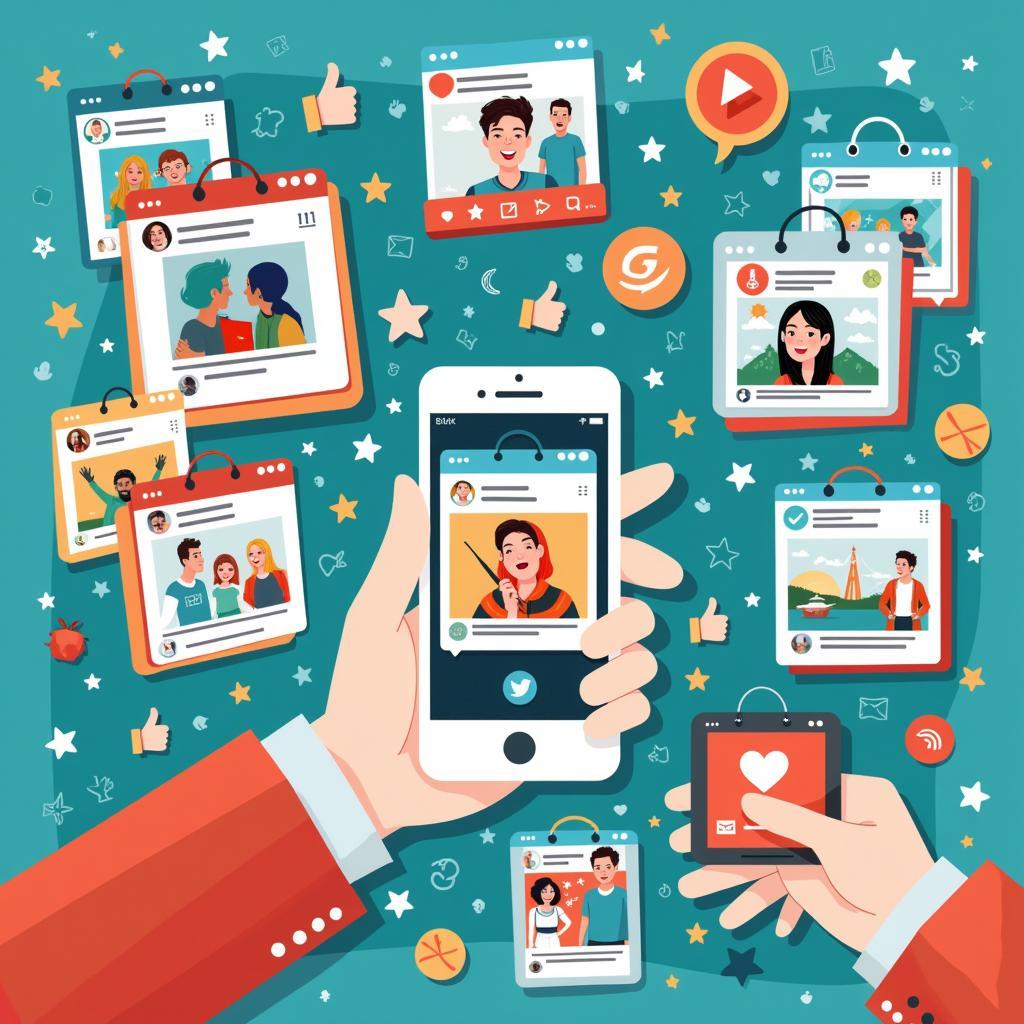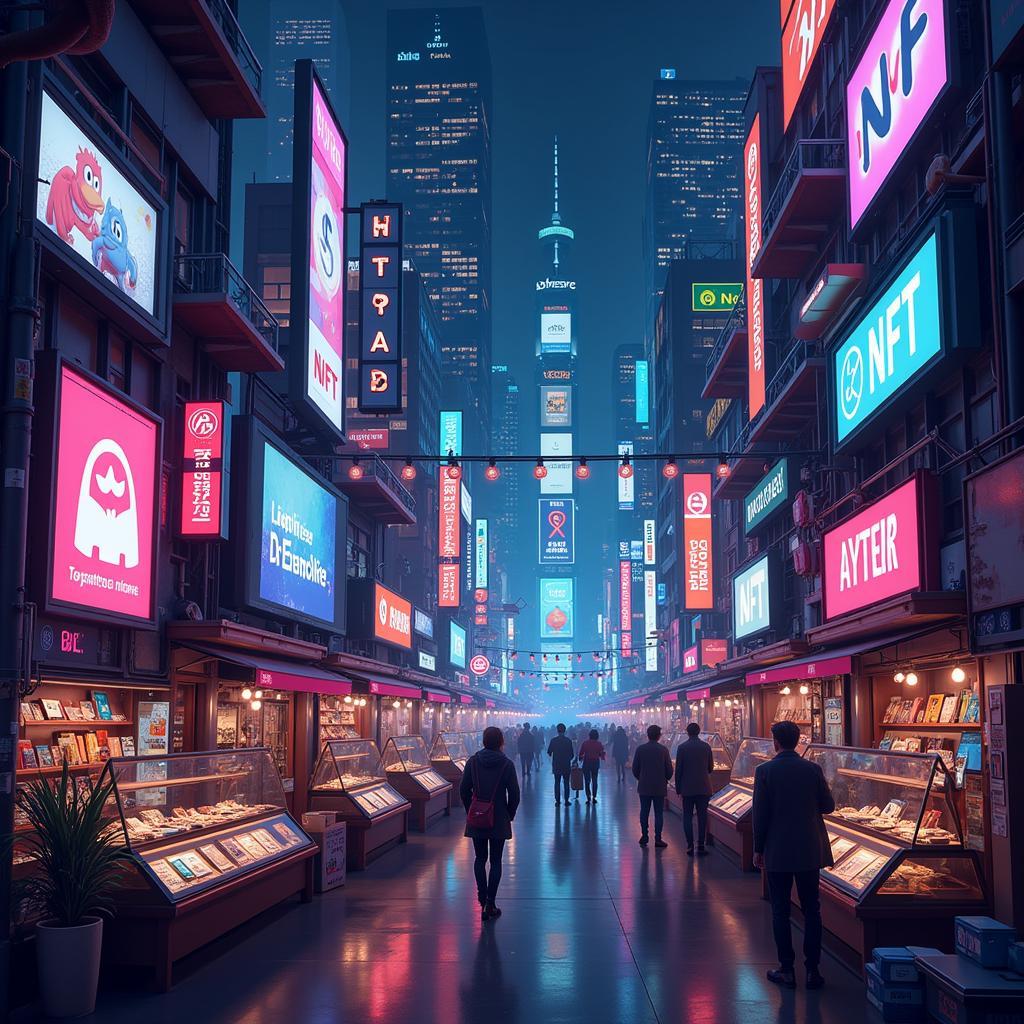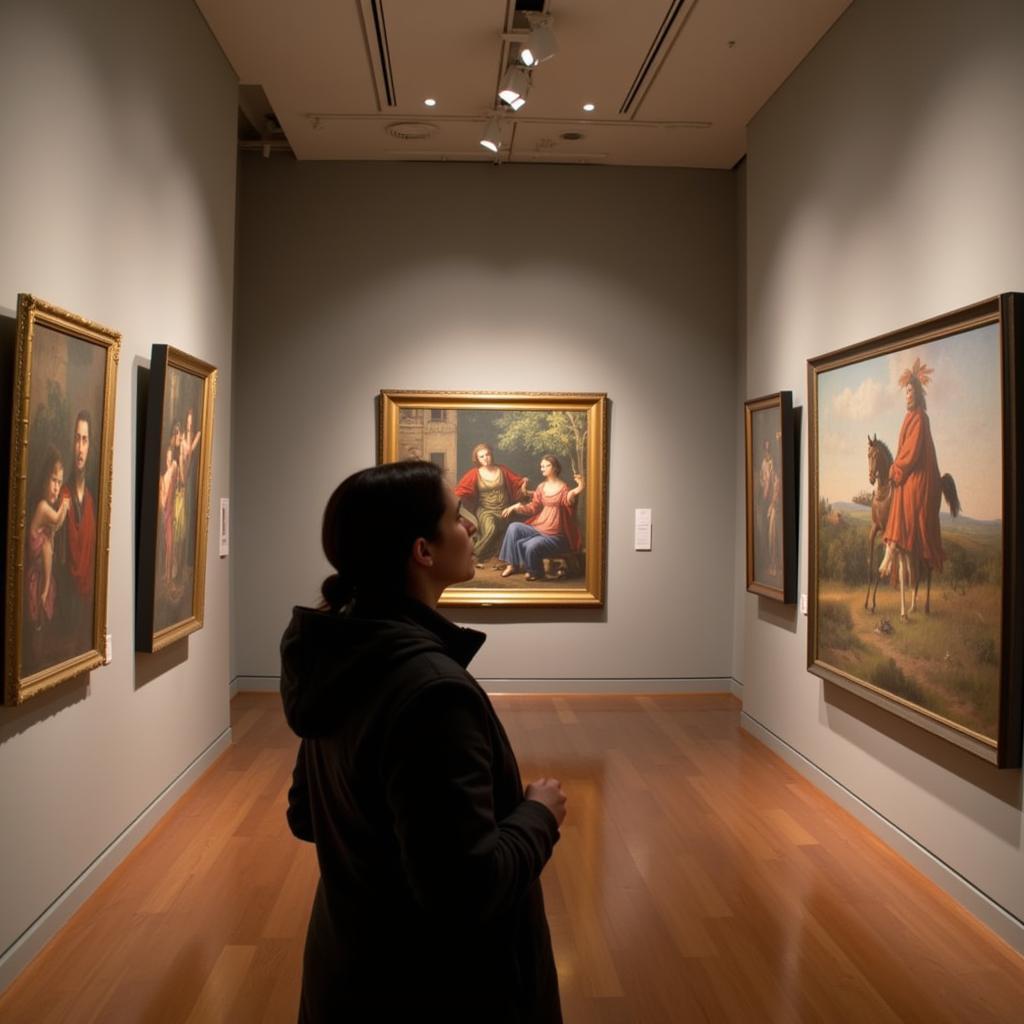Navigating Art Consumerism: A Critical Look at Art in the Digital Age
Art Consumerism is a complex and multifaceted phenomenon, impacting how we create, experience, and value art in today’s digital landscape. From the rise of online galleries and digital art platforms to the influence of social media on artistic trends, understanding art consumerism is crucial for both artists and art enthusiasts. It asks us to examine the delicate balance between art as a commodity and art as a form of expression. Are we buying into trends or genuinely connecting with the art itself? Let’s explore this evolving relationship.
As the art market becomes increasingly accessible through digital platforms, the lines between appreciating art and consuming it become increasingly blurred. We are bombarded with images, constantly scrolling through feeds filled with aesthetically pleasing visuals. This readily available exposure, while democratizing art in some ways, also raises concerns about the commodification of creativity. How does this constant exposure shape our artistic tastes and preferences? Does it foster genuine appreciation or simply fuel a desire for the next visually stimulating trend? One key element in this discussion is the rise of digital art platforms, which offer new avenues for artists to showcase their work and connect with a global audience. This increased accessibility can be a double-edged sword. While it empowers artists and offers them greater control over their creations, it also introduces new challenges, such as protecting intellectual property and navigating the complex landscape of online art sales. How do we reconcile the desire for widespread access with the need to protect artistic integrity and ensure fair compensation for artists in this digital realm? This delicate balance is at the heart of the ongoing conversation about art consumerism.
The Impact of Social Media on Art Consumerism
Social media platforms have become significant players in shaping artistic trends and driving art consumerism. The “viral” nature of online content can propel an artist to fame overnight, often based on aesthetics rather than deeper artistic merit. Consider the trend of rose pop art, which gained immense popularity on social media, influencing both artistic creation and consumer demand. This rapid dissemination of visual trends through social media raises questions about the longevity and depth of such movements. Are they fleeting moments of visual stimulation, quickly replaced by the next trend, or do they represent a genuine shift in artistic expression?
How Social Media Influences Artistic Trends
Social media algorithms, designed to maximize engagement, often prioritize visually appealing content, further reinforcing the emphasis on aesthetics. This can lead to a homogenization of artistic styles, as artists cater to the preferences of the online audience. The pressure to create “Instagrammable” art can sometimes overshadow the deeper meaning and intention behind the creative process. How do artists balance the desire for online visibility with the need to stay true to their unique artistic vision?
 Social Media Influence on Art Consumerism
Social Media Influence on Art Consumerism
The Rise of Digital Art and NFTs
The emergence of digital art and non-fungible tokens (NFTs) has revolutionized the art market, creating new opportunities and challenges for artists and collectors. NFTs offer a way to authenticate and own digital art, potentially solving issues of ownership and copyright in the digital realm. This shift towards digital ownership has led to a surge in interest and investment in digital art, further blurring the lines between art and commodity. What are the long-term implications of this shift towards digital ownership for the art world? Will NFTs democratize art collecting or simply create another exclusive market?
Navigating the NFT Marketplace
The NFT marketplace is still relatively new and evolving, presenting both exciting prospects and potential pitfalls for artists and collectors. The environmental impact of NFTs, due to the energy consumption associated with blockchain technology, is a growing concern. Furthermore, the volatile nature of the cryptocurrency market adds another layer of complexity to the valuation and trading of digital art. How do we navigate these challenges to ensure a sustainable and ethical future for digital art and NFTs?
 Navigating the NFT Marketplace
Navigating the NFT Marketplace
Reclaiming Authenticity in the Age of Art Consumerism
In the face of pervasive art consumerism, it’s crucial to cultivate a discerning eye and appreciate art for its intrinsic value. We can do this by engaging with art on a deeper level, seeking out artists whose work resonates with us on a personal level, and supporting their creative endeavors. Consider the work of artists like Sue Tsai, who use their art to explore complex themes and challenge societal norms.
Cultivating Meaningful Connections with Art
Instead of passively consuming art as a fleeting trend, we can actively seek out opportunities for meaningful engagement. Visiting museums and galleries, attending artist talks, and participating in art workshops can foster a deeper appreciation for the creative process and the stories behind the artwork. We can also challenge ourselves to look beyond the surface aesthetics and explore the underlying meaning and intention of the art we encounter. What questions does the artwork raise? What emotions does it evoke? By engaging with art in this way, we can move beyond mere consumption and cultivate a genuine connection with the art itself.
 Reclaiming Authenticity in Art
Reclaiming Authenticity in Art
Conclusion: Finding Balance in Art Consumerism
Art consumerism, fueled by the digital age, presents both opportunities and challenges for the art world. By critically examining the influence of social media, the rise of digital platforms, and the evolving art market, we can navigate this complex landscape and cultivate a more conscious and meaningful relationship with art. It’s about finding a balance between appreciating art as a commodity and valuing it as a form of human expression. How will you engage with art in the age of consumerism?
FAQ
- What is art consumerism?
- How does social media influence art consumerism?
- What are the pros and cons of NFTs in the art world?
- How can I support artists ethically?
- How can I develop a deeper appreciation for art?
- What are some examples of art consumerism in the digital age?
- How do I avoid falling prey to fleeting art trends?
Common Scenarios and Questions:
-
Scenario: I see a lot of similar art styles on Instagram. Is this art consumerism at play?
- Likely answer: Yes, social media algorithms often promote trending styles, leading to a homogenization of art.
-
Scenario: I’m interested in buying an NFT but I’m worried about the environmental impact. What can I do?
- Likely answer: Research NFT platforms that use more sustainable blockchain technology.
Further Exploration:
Check out these other related articles: consumerism and pop art and tinned fish art. For those interested in financial aspects of art, explore money canvas art.
For support, contact us at Phone: 02462573573, Email: danteum@gmail.com or visit us at Savico Megamall, 7-9 Đ. Nguyễn Văn Linh, Gia Thụy, Long Biên, Hà Nội 10000, Việt Nam. We offer 24/7 customer service.

